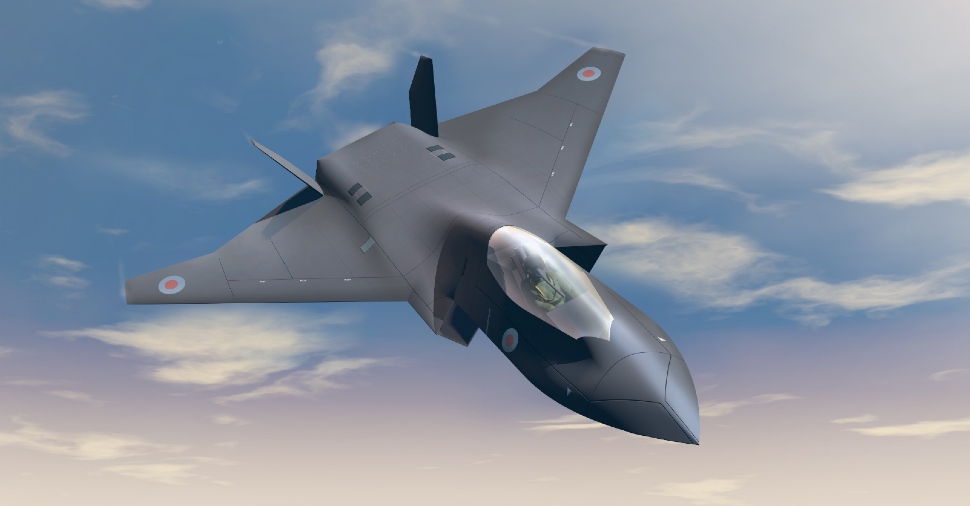The UK’s defence procurement body is pursuing an acquisition review process, with a new way of working with suppliers, more rapid and efficient development activities and increased export sales among its objectives.
“The level of investment needed to deliver major programmes is now off the scale, compared with that of history,” says Defence Equipment and Support (DE&S) organisation chief executive Sir Simon Bollom.
Delivering the Royal Aeronautical Society’s annual Sir Sydney Camm lecture in London on 10 June, he noted that when using 2019 economic conditions, a Supermarine Spitfire’s production cost would be around £800,000 ($1 million); orders of magnitude less than a modern-day combat aircraft.
While the pursuit of advanced technology means serious expense, the ongoing review is looking at ways of improving conditions by driving an innovation culture and accelerating the Ministry of Defence’s procurement process.

Crown Copyright
“In some instances, we just spend far too much time defining requirements, testing and evaluating options, when actually the solution is relatively straightforward,” Bollom says. He cites a recent order for five Boeing 737-based E-7A airborne early warning and control system aircraft for the Royal Air Force (RAF), to replace its aged Boeing E-3D Sentry fleet.
While the non-competitive nature of the £1.5 billion deal drew criticism from some quarters, Bollom asserts that it was the right decision, pointing out: “There was a clear military need and urgent requirement, all developed within an available solution.” In-country modification work will be performed by Marshall Aerospace and Defence Group from 2021.
EXPEDITED SOLUTION
“We managed to go from concept to contract inside 18 months, and a solution will be procured that has been developed and operated in service and is fully compatible with NATO allies.” This represents “sensible risk reduction”, he says.
Similarly, the RAF’s first of nine Boeing P-8A Poseidon MRA1 maritime patrol aircraft made its flight debut on 12 July. The aircraft will in October be delivered to support training activities at the US Navy’s NAS Jacksonville site in Florida, before arriving in the UK early next year, the service says.
Introducing the Poseidon will close a capability gap open since the retirement of the RAF’s last BAE Systems Nimrod MR2s and cancellation of their intended replacement, the MRA4.
“Programme collapses, such as we had with Nimrod [MRA4], not only create capability gaps, but also holes in the technology pipeline, with the consequence that the expertise will fade and drift away,” Bollom notes. “But neither is it good enough to wait 10 years for a product to emerge while we wrangle over the finer points of the design and try to predict the nature of warfare 10 years hence.”
For one of the UK’s most important potential procurements – of a sixth-generation fighter via the Tempest programme – the pending reforms could have a significant part to play.

Team Tempest
Launched at the Farnborough air show in July 2018, the current study activity involves BAE, Leonardo’s UK arm, MBDA, Rolls-Royce, DE&S and the RAF’s Rapid Capabilities Office. The project envisions delivering a future combat air system by around 2035, with international partners sought from early in the programme.
“Tempest offers a great opportunity for the UK defence industry, with international partners, to make a bold statement about the defence sector, re-establish our national sovereignty [in the combat air sector] and launch new product lines that are attractive to export nations,” Bollom says. Potential partners have been listed as Japan, Sweden and Turkey.
Bollom says international arrangements could follow the so-called “best athlete” model employed by Lockheed Martin when selecting suppliers for its F-35. “Nations need to collaborate on the strength of what they bring to a programme, with the desire for industrial and technology gains in there as a consideration, but not the primary driver,” he says. This would mark a shift from the rigid workshare models employed by industry and nations on projects such as Eurofighter.
Arguing that strong early momentum with Tempest needs to be maintained, he points to the UK’s “failure to exploit our technological advantages in unmanned air systems and autonomy in the middle of the last decade” as a missed opportunity.
“[BAE’s] Herti and Mantis [unmanned air vehicles] were two examples of products that were in development, but we didn’t seize the opportunity for a number of reasons. Now these [types of] products are freely available in the open market worldwide, and the UK does not have a leading product,” he notes.
Summing up his experience as the head of DE&S since May 2018, Bollom notes of the reform process: “I firmly believe that the right moves are being made.”
“The rapid capability offices have started a bushfire, the innovation fund provides the fuel, and the tailored route to procurement will provide the oxygen,” he says. “The accelerator to pull all of this off is a culture which allows risk-based decision-making, empowerment with accountability, and an acceptance that taking even measured risk is not always guaranteed a successful outcome.”
Source: Flight International



















